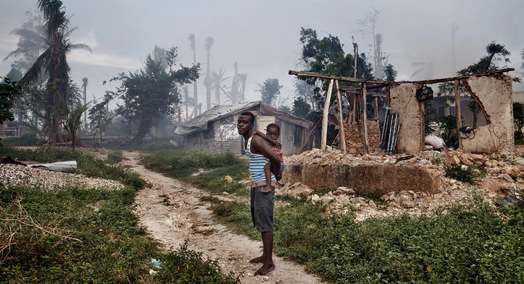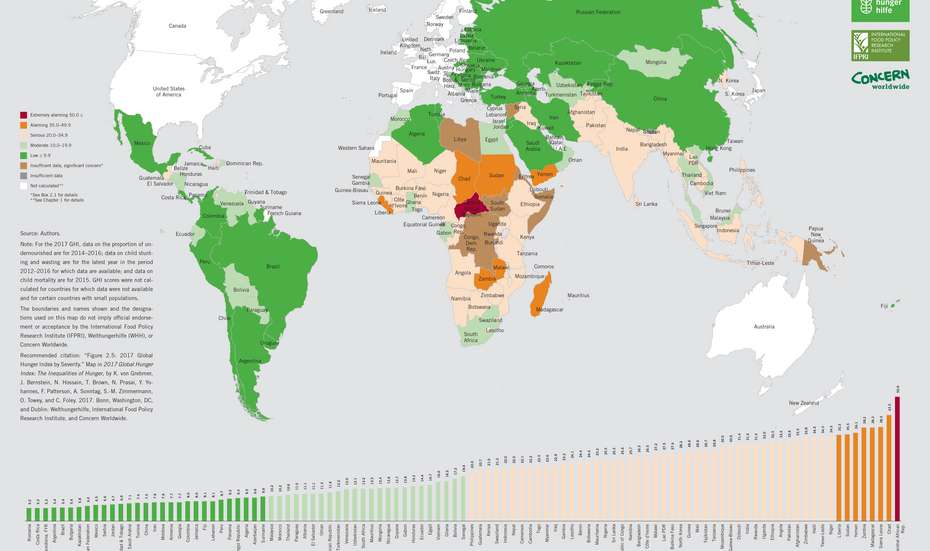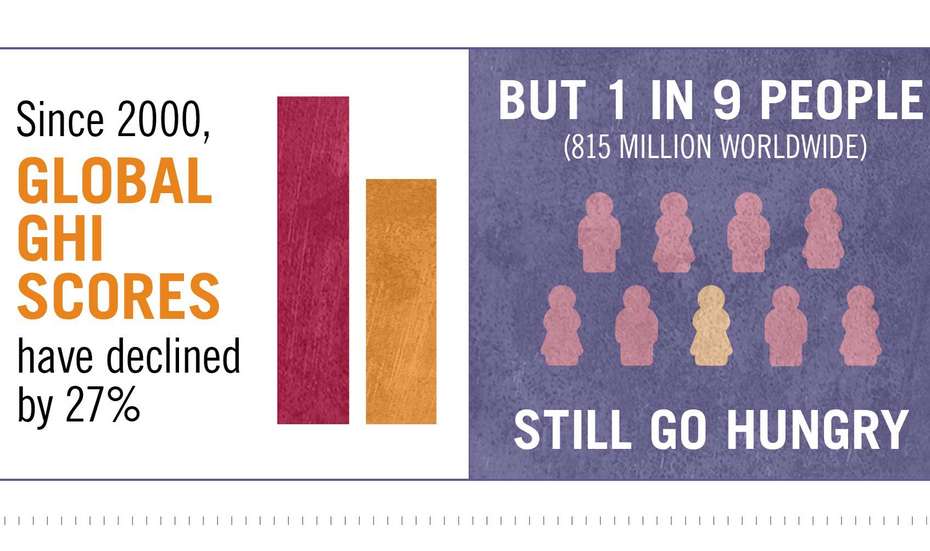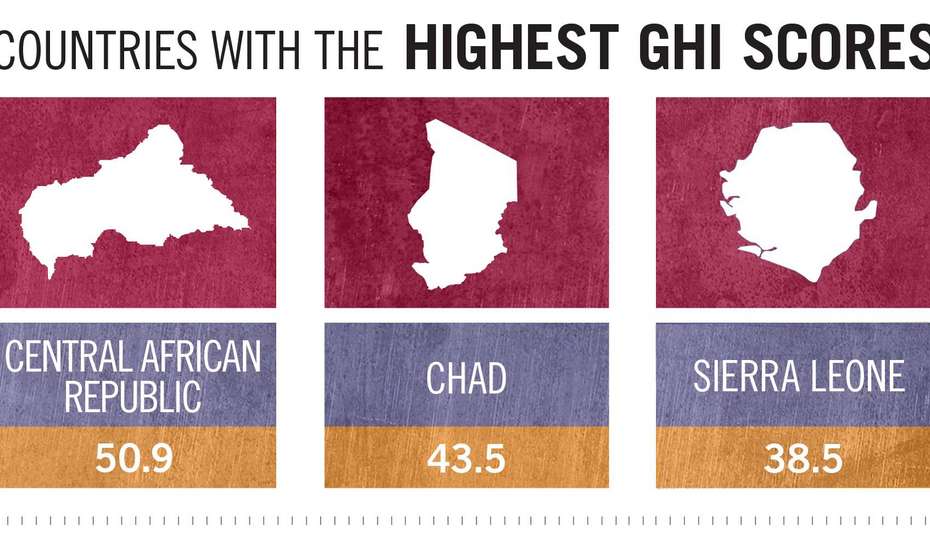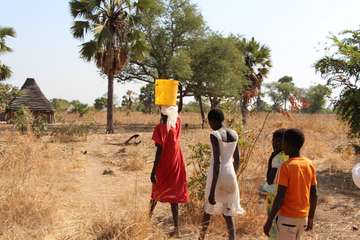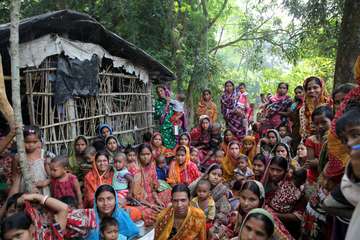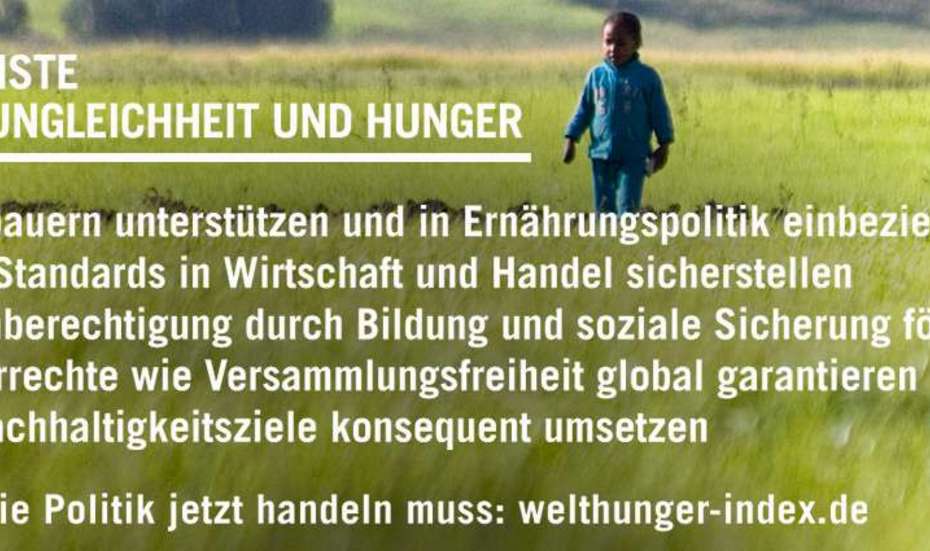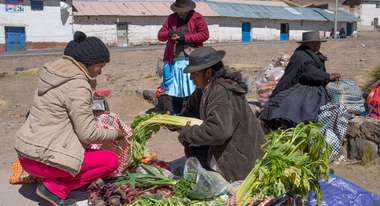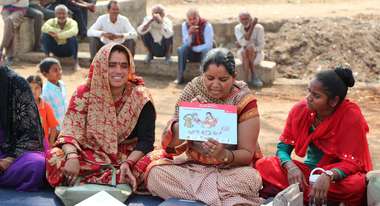8 Things You Should Know about Hunger
Every ninth person is going hungry - we want to change that. Here are eight facts on hunger, where it is worst and how we defeat it.
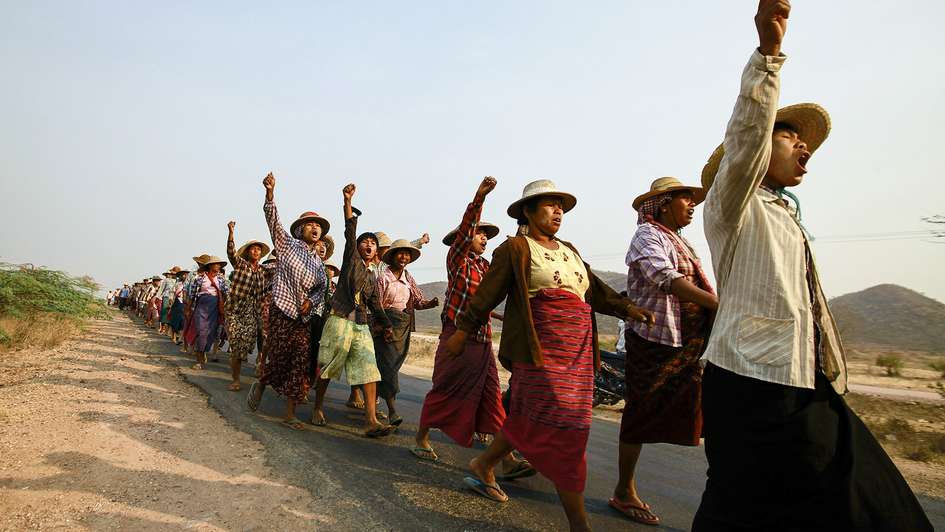
1. Hunger is Quantifiable
Every 9th person is going hungry. We want to change this statistic. In addition to emergency aid and long-term projects, our work includes raising awareness of hunger and engendering political engagement. Reliable data is particularly important when it comes to fighting hunger. For this reason, Welthungerhilfe, Concern Worldwide and IFPRI publish the Global Hunger Index (GHI) on an annual basis. The 2017 edition has just been released. The 2017 GHI addresses the hunger situation of 119 countries. GHI rankings are calculated using data on undernutrition, child wasting, child growth stunting and child mortality. Read about how the GHI is calculated here.
2. Progress in Fighting Hunger
With famines looming menacingly, it is easy to forget the progress that has already been made in the fight against hunger and undernutrition. Of course, we are happy with that progress, but it should be enjoyed with caution. In its Sustainable Development Goals, the United Nations set the goal of Zero Hunger by 2030. However, if things continue at their current pace, the international community will unfortunately not meet this goal.
3. This is Where Hunger is the Worst
In Chad, Liberia, Madagascar, Sierra Leone, Sudan, Zambia and Yemen, scores of hunger are currently categorised as “alarming,” with scores in the Central African Republic even rising to “extremely alarming.” With the exception of Yemen, all of these countries are in Africa South of the Sahara. The Central African Republic has been coming in last in the Global Hunger Index for several years. Due to a lack of data, GHI rankings could not be calculated for 13 countries, including Syria, South Sudan and Somalia.
4. These Countries have made the most Progress
In 2000, scores of hunger in Angola, Ethiopia and Rwanda were categorised as “extremely alarming.” Scores for 2017 are 42-44% lower, now falling under the category of “serious.” Nonetheless, these countries are also still facing great challenges. For example, Angola has the highest child mortality rate (15.7%) in this year's report. However, scores of hunger and undernutrition have already decreased in comparison to previous years, giving reason for hope.
5. Four Countries Facing Famines
South Sudan, Somalia, Nigeria and Yemen are currently facing famines. Available data for South Sudan and Somalia was insufficient for inclusion in the Global Hunger Index. However, the situation is alarming: A severe drought, a high number of internally displaced persons and difficulty in providing humanitarian assistance to the population of Somalia drove the country to the precipice of a catastrophic famine in 2017. The acute food crisis in South Sudan, brought about by conflict and instability, had far-reaching effects. It forced parts of the population to flee, destroyed markets and threatened crop failures.
6. Inequality is a Primary Cause of Hunger
Current global food production could easily feed the world’s population. The fact that hunger still persists is due to extreme inequality. Origins, gender, age or socio-economic status can have a massive effect on the food and nutrition situation of a particular individual or group. The uneven distribution of hunger reflects the uneven distribution of power in the global food and nutrition system. Anyone interested in learning more about the issue is encouraged to read Naomi Hossain’s essay: Inequality, Hunger, and Malnutrition: Power Matters.
7. Politics must do More
Much remains to be done to reduce inequality and achieve Zero Hunger for everyone and everywhere. This graphic provides an overview of the most important points. Find out more in the Policy Recommendations of the Global Hunger Index.
8. You can Contribute Too
Everyone can contribute to making the world a more equal place and to offering every person a life free of hunger.
-
Engage with Welthungerhilfe: Get involved now
-
Use resources responsibly: How to waste less food
-
Support sustainable development with a donation
-
Remind your representative about Zero Hunger, for example with a tweet or a good, old-fashioned letter
Learn all about the Global Hunger Index and current scores of hunger at www.welthunger-index.de.
